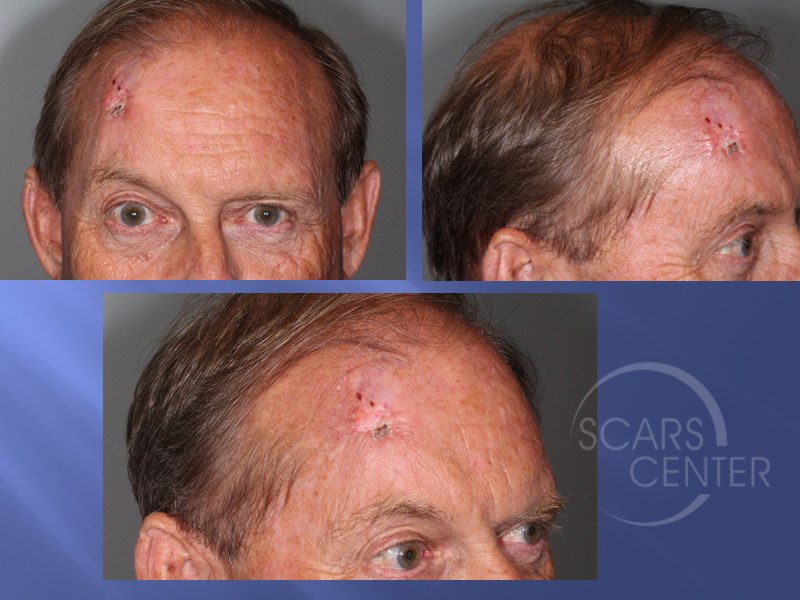STAGING OF RECURRENT EXTENSIVE BASAL CELL CARCINOMA OF THE FOREHEAD
HISTORY
This 68-year-old man presented with a recurrent extensive right forehead basal cell carcinoma eight years after previous Mohs excision. The lesion itself is palpable as it extends for approximately 5 cm. The extent appears to be subcutaneous for approximately 1.5 cm past a visible plaque. The histopathology shows this to be a nodular type basal cell carcinoma.
DISCUSSION
The conference discussion was centered around the option of performing staging biopsies of this patient in order to predict the extent of resection required and the reconstruction necessary for the patient. The alternative, of course, is to prepare the patient based on the clinical evaluation of the tumor palpability and proceed with Mohs excision and planned reconstruction. Although, both approaches are appropriate, the argument against staging biopsies was based on the fact that the histology was nodular and not infiltrative with subclinical strands of carcinoma extensions through the tissue. That type of histology would be difficult to detect with simple palpation and would require biopsies to determine the true extent. Even in those cases an argument was made that sample biopsies may miss single cell infiltration and fail to adequately predict the extent of resection required.
The argument for staging biopsies prior to Mohs excision was based on psychologically preparing the patient for the operation. This would be a big resection. Preparing the patient for a significant functional impairment is important. For example, eyebrow and eyelid involvement in this patient could change the approach to the treatment and reconstruction. Also, knowing the extent of reconstruction prepares the reconstructive surgeon and the surgical facility to properly allocate resources and time to the operation.


